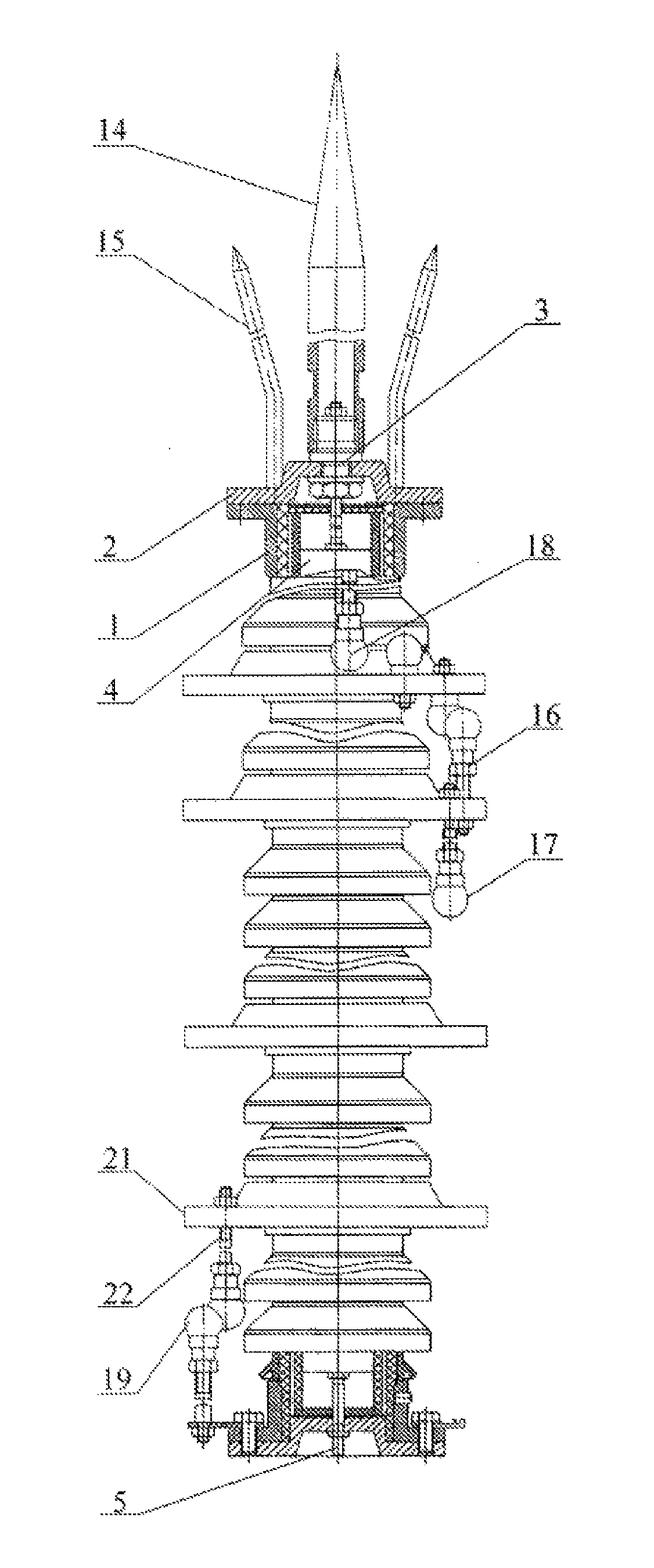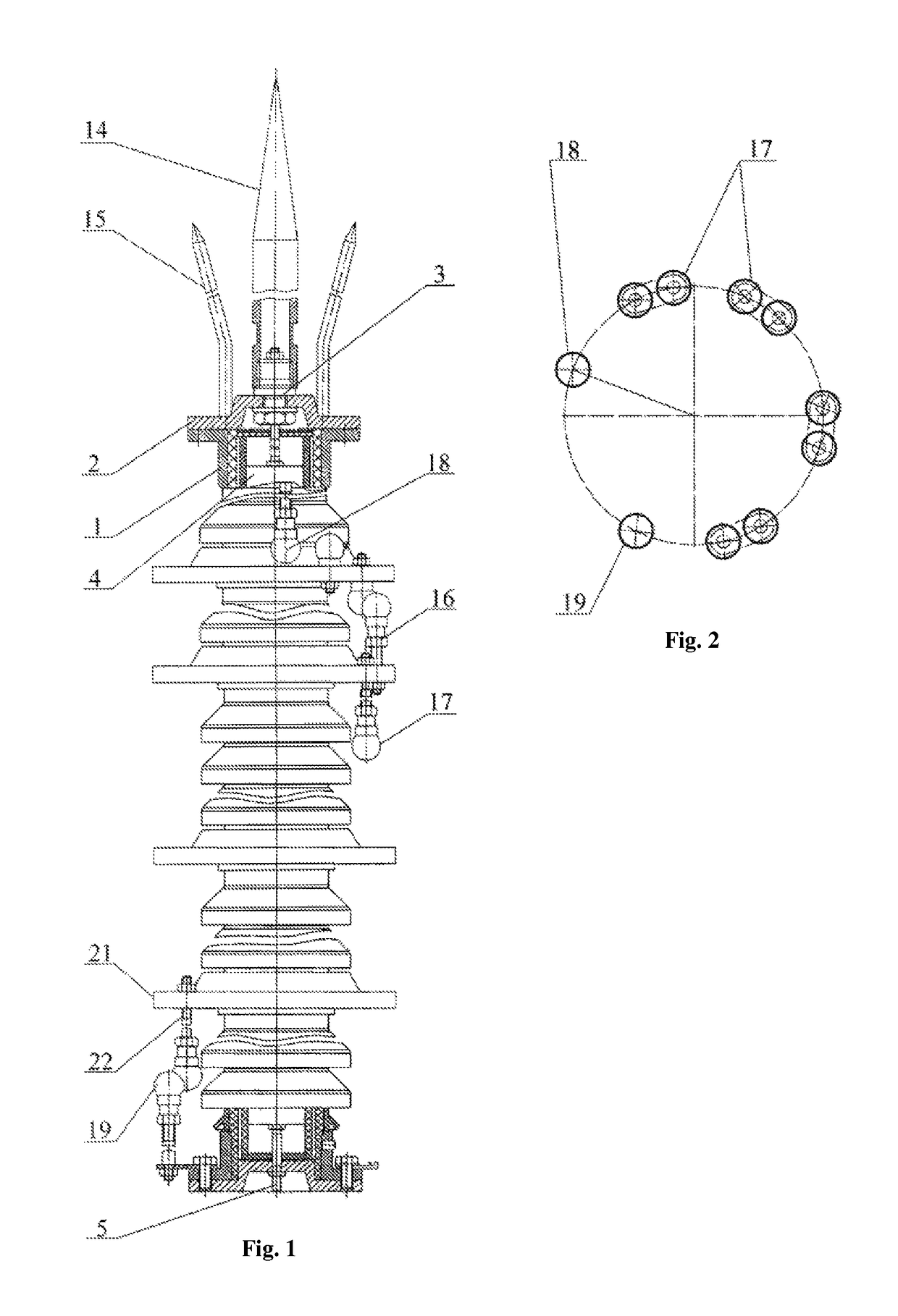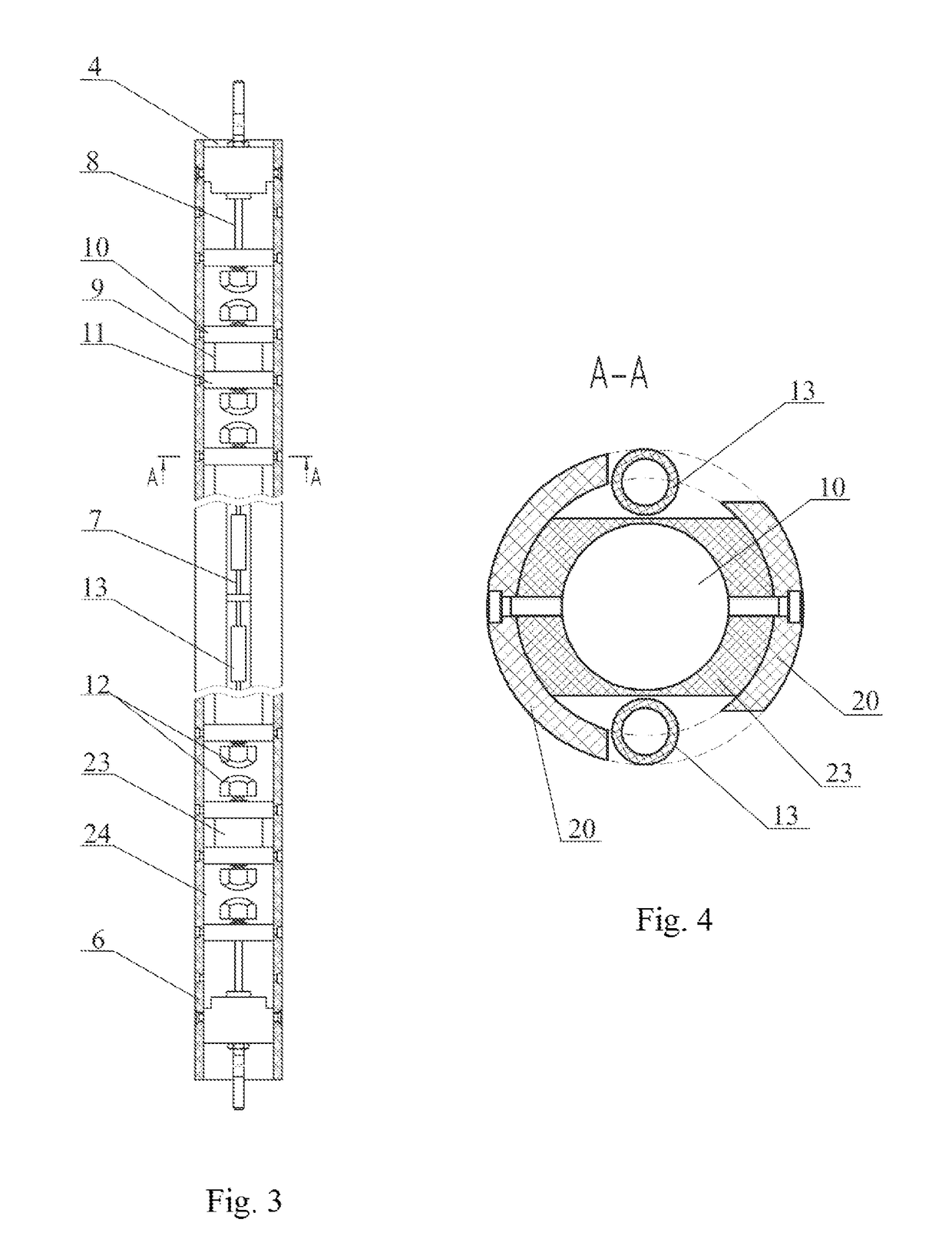Active lightning conductor
a technology of active lightning and conductors, applied in the direction of discharge by conduction/dissipation, active discharge triggering, electrical devices, etc., can solve the problems of low security of objects against destruction, inconvenient device, high complexity of execution, etc., to improve the reliability and service life of the device, improve the structural, technological and operational performance of the lightning conductor, and improve the protection of facilities against damage
- Summary
- Abstract
- Description
- Claims
- Application Information
AI Technical Summary
Benefits of technology
Problems solved by technology
Method used
Image
Examples
Embodiment Construction
[0041]The active lightning conductor comprises a housing 1 with a cover 2, an active lightning-receiving unit 3 connected in series to a high-voltage impulse generator 4 excited by an external lightning-induced magnetic field, and to a contact element 5 of the grounding system.
[0042]The generator 4 presents a case 6 the outer side of which encloses at least two charging resistor circuits 7 as well as a multiunit arrester made as at least one capacitive discharge circuit 8 composed of in-line alternating capacitors 9. Each capacitor 9 has two charging plates 10, 11, and arresters 12 functionally combined with the same and made as projections of adjusted height on the outer side of said plates 10, 11. The charging resistor circuits 7 are composed of resistors 13 connected in series and divided into two groups. The resistors of one of them are connected to the upper capacitor plates 10 and the resistors of the other group are connected to the lower capacitor plates 11 of the capacitors...
PUM
 Login to View More
Login to View More Abstract
Description
Claims
Application Information
 Login to View More
Login to View More - R&D
- Intellectual Property
- Life Sciences
- Materials
- Tech Scout
- Unparalleled Data Quality
- Higher Quality Content
- 60% Fewer Hallucinations
Browse by: Latest US Patents, China's latest patents, Technical Efficacy Thesaurus, Application Domain, Technology Topic, Popular Technical Reports.
© 2025 PatSnap. All rights reserved.Legal|Privacy policy|Modern Slavery Act Transparency Statement|Sitemap|About US| Contact US: help@patsnap.com



